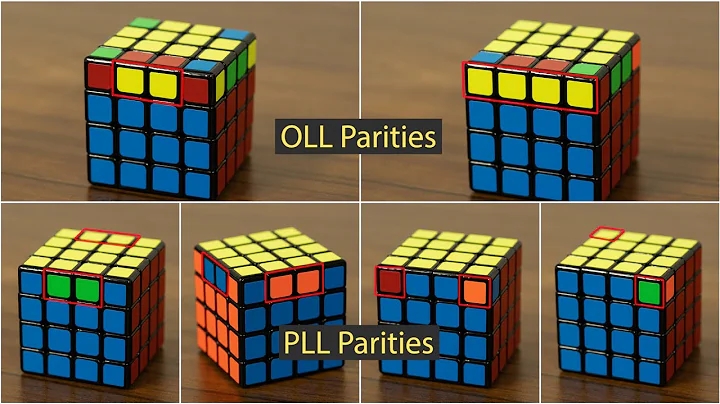Handling OLL (Orientation of the Last Layer) and PLL (Permutation of the Last Layer) parities on a 4×4 Rubik’s Cube can be tricky but manageable with the right algorithms. Let’s break down each parity case and provide easy-to-follow solutions:
OLL Parity
Symptoms: The 4×4 cube appears to have two flipped edge pieces on the last layer, disrupting the usual OLL process.
Solution:
- Hold the cube with the parity error facing you.
- Apply the following algorithm:
r U2 x' r U2 r U2 r' U2 l U2 r' U2 r U2 r' U2 r'- Explanation:
r: Move the inner slice of the right face clockwise.U2: Rotate the Up face (top) 180 degrees (half turn).x': Rotate the cube on the x-axis counterclockwise (bring the front face to the bottom).- Repeat the sequence as necessary until the edges are oriented correctly.
PLL Parity
Symptoms: The 4×4 cube looks solved except for the permutation of two adjacent edge pieces.
Solution:
- Hold the cube with the PLL parity facing you.
- Apply the following algorithm:
2U (2L 2R)2 U2 (2L 2R)2- Explanation:
2U: Rotate the two middle layers of the cube simultaneously (clockwise).(2L 2R)2: Rotate the two inner slices of the left and right faces simultaneously (clockwise).U2: Rotate the Up face (top) 180 degrees (half turn).- Repeat the sequence if needed until the edges are permuted correctly.
Tips:
- Practice: Memorize these algorithms and practice executing them smoothly.
- Understand the Movements: Familiarize yourself with how each algorithm affects the cube’s orientation and permutation.
- Stay Calm: Parity errors can be frustrating, but take your time and focus on executing the algorithms accurately.
By mastering these OLL and PLL parity algorithms, you’ll be better equipped to solve the 4×4 Rubik’s Cube efficiently. Keep practicing and enjoy the challenge!
